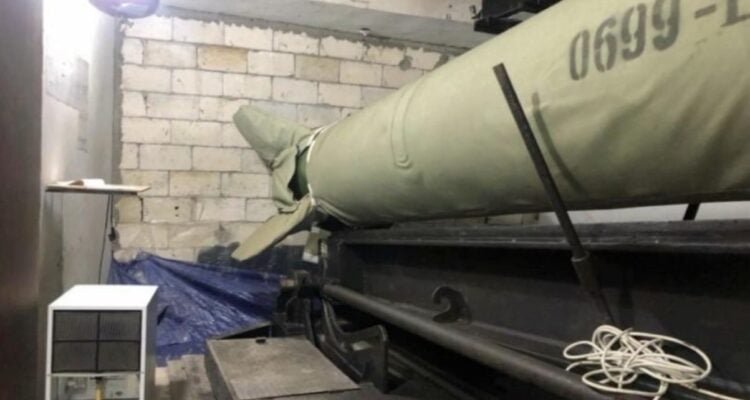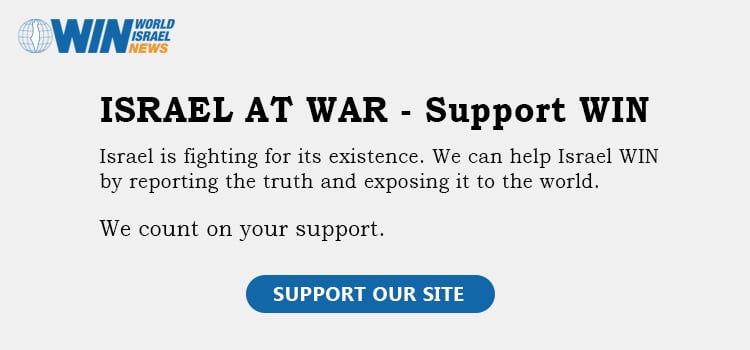Even as some 80% of its firepower has been neutralized, Hezbollah’s potential to disrupt life in Israel’s northern regions remains.
By Yaakov Lappin, JNS
Israel’s military campaign against Hezbollah over the past two months has caused devastating losses to the terror organization’s once-formidable arsenal.
Waves of large-scale Israeli Air Force strikes destroyed tens of thousands of enemy projectiles, alongside the elimination of Hezbollah’s senior military-terrorist leadership and severe harm caused to field-level commanders.
Despite attempts to conceal and protect its weaponry, by entrenching it in civilian village homes and under multi-story apartment buildings in Beirut and other cities, Hezbollah’s missile supply has been heavily damaged.
Questions remain, however, about the exact inventory Hezbollah retains and its capacity to fire further strikes. The Shi’ite group itself may not be fully aware of what is left of its arsenal.
According to a statement made by former Israeli Defense Minister Yoav Gallant on Oct. 29, Hezbollah has lost most of the rocket and missile capabilities it possessed prior to joining the war in support of Hamas.
“I estimate the remaining capacity of the missiles and rockets to be on the order of 20% [of the previous arsenal], and also it is not organized in the way that it used to be, in a way that [Hezbollah] could fire [major] volleys,” Gallant said during a visit to IDF Northern Command headquarters in Safed.
Before the IDF’s extensive aerial and ground strikes, some in the military assessed that Hezbollah could fire more than 10,000 projectiles per day in the first week of the conflict, with most of them targeting the north and some central Israel.
Now, Hezbollah is managing to fire between 100 and 200 rockets daily on average aimed at northern Israel, with sporadic attacks reaching central regions.
As Israel’s targeted ground operations continue in Southern Lebanon, alongside dozens of daily airstrikes throughout Lebanon, significant Hezbollah weapons stockpiles and infrastructure are still being uncovered and dismantled.
On Nov. 9, the IDF announced that troops of the IDF’s 769th “Hiram” Territorial Brigade, operating under the 91st “Galilee” Division, dismantled approximately 300 terrorist facilities and confiscated an array of weaponry, including Kornet anti-tank missiles, RPGs, combat equipment and intelligence materials.
In one notable discovery, IDF troops located a mobile missile system with 24 rockets ready to launch against civilian communities in the Galilee, concealed in a forested area and attached to a civilian structure. The IDF has secured the system and moved it into Israel.
Alma Center estimates
According to estimates by the Alma Research and Education Center, which specializes in threats from the northern arenas, prior to September, Hezbollah possessed 65,000 rockets with ranges of up to 80 kilometers (50 miles), 5,000 rockets and missiles with ranges of between 80 and 120 kilometers (75 miles), 5,000 missiles with ranges of between 200 (125 miles) and 700 kilometers (435 miles), and 2,500 unmanned aerial vehicles.
In addition, the Alma Center estimated that Hezbollah possessed some 150,00 mortar rounds, for a total arsenal of some 225,000 explosive charges (not including the UAVs).
The exact condition of Hezbollah’s remaining arsenal is challenging to verify.
On November 10, Walla reported that IDF assessments indicate that Hezbollah has lost about 80% of its rocket arsenal for ranges up to 40 kilometers (25 miles).
The report also estimates that, at the start of the conflict, Hezbollah had approximately 5,000 medium-range rockets, a number that has now dropped to fewer than 1,000.
Additionally, its short-range rocket stock has fallen from an estimated 44,000 to below 10,000
IDF assessments, according to the report, suggest that Hezbollah’s supply of precision-guided munitions, which initially numbers is the hundreds, is now reduced to less than a hundred units, including several coast-to-sea missiles.
Even amid these setbacks, Hezbollah continues to display its capabilities sporadically.
On Nov. 8, the group claimed to have fire “high-quality rockets” targeting the Israeli Navy’s Stela Maris base north of Haifa, as well as other military sites.
While Israel intercepts most attacks, such actions indicate Hezbollah’s attempts to activate remaining offensive capabilities and its willingness to settle into a war of attrition, despite the significant reduction of its stockpile.
Sustained by Iran
Hezbollah’s arsenal is sustained primarily through supply channels from Iran, which include overland and aerial routes via Syria.
Resupply typically flows through the Masnaa border crossing between Syria and Lebanon, according to the Alma Center, which in the past enabled a steady stream of rockets and precision components.
The Iranian Revolutionary Guard Corps (IRGC) is responsible for overseeing these logistics, using the CERS (French acronym for Syrian Scientific Studies and Research) facility in Syria as a central hub.
This center not only produces weapons directly for Hezbollah but also serves as a key storage and distribution site for Iranian-supplied arms in the region, according to Alma.
Some precision weaponry reaching Hezbollah has been manufactured in Iran, while other components and precision systems are transferred from CERS in Syria under IRGC guidance.
Israel has spent weeks intensifying its efforts to interdict Hezbollah’s weapon supplies, an effort that will likely continue indefinitely.
The IAF has struck numerous convoys in Syria suspected of carrying weapons, including systems bound for Hezbollah’s caches in Lebanon.
Israeli intelligence continues to monitor land, air and maritime supply routes to prevent resupply from Iranian sources.
Nevertheless, a residual inventory, albeit smaller and fragmented, may allow Hezbollah to continue limited, targeted strikes until a ceasefire is reached.
Even as some 80% of its firepower has been neutralized, Hezbollah’s potential to disrupt life in Israel’s northern regions remains.
Following any future truce, it will be critical for Israel to ensure that Hezbollah’s ability to rebuild its deadly arsenals with the assistance of Iranian military technology and supply networks remains severely disrupted and under continuous surveillance and attack.





